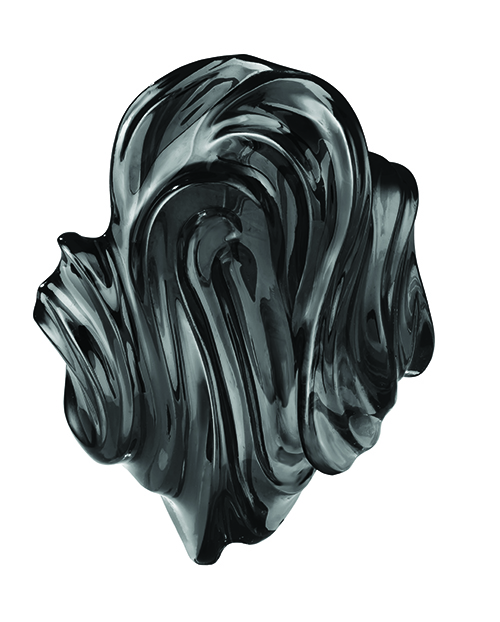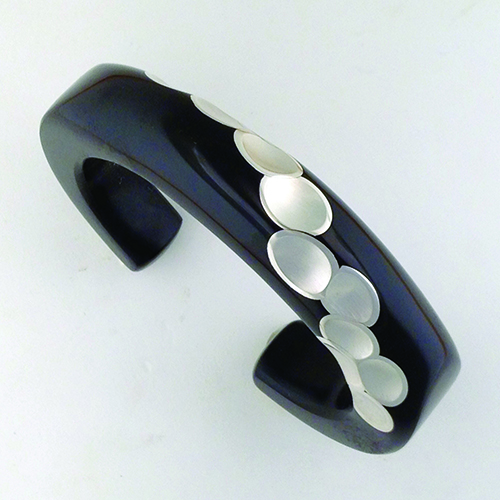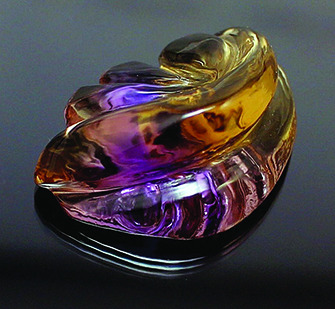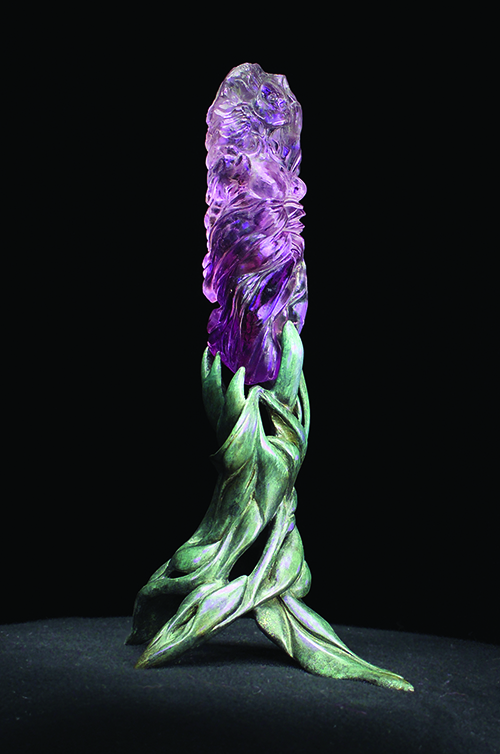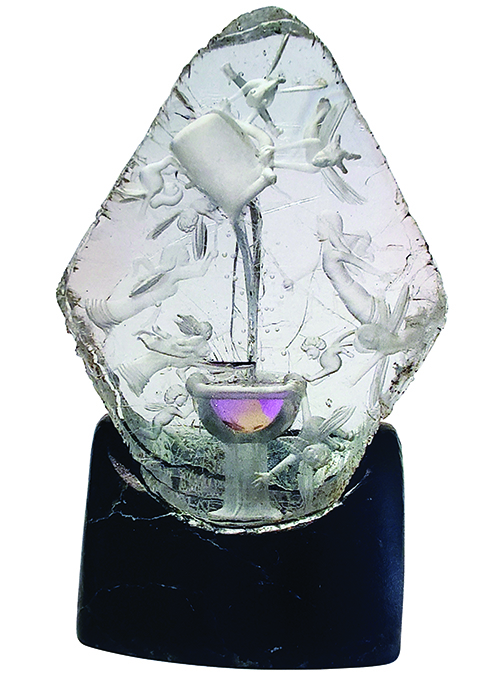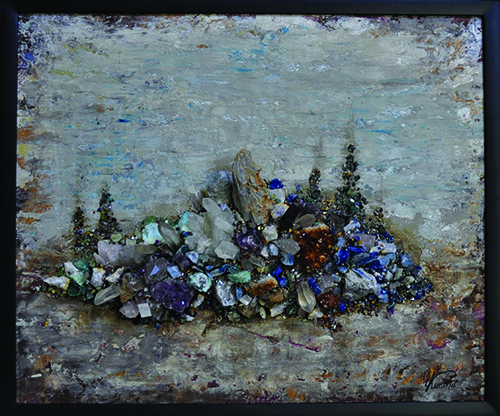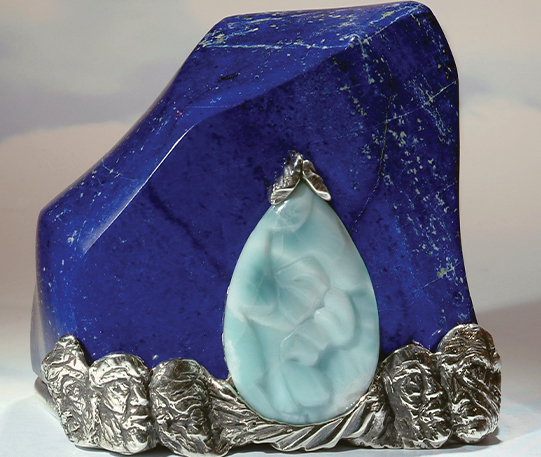
By Helen Serras-Herman
A quarter century has passed since the birth of the Gem Artists of North America (GANA), an organization comprising lovers of the gem art world. Gem artists held their first meeting in February of 1995 during the annual gem shows held in Tucson, Arizona. It was only natural to choose Tucson as the annual meeting venue, as thousands of gem dealers, mineral collectors, jewelers, gemologists, appraisers, and gem artists were present to experience buying, selling, and discovering gems and vendors.
The group’s goal was to create a forum for artists and professionals of the gemstone art industry that ignites the creative spirit, supports artist needs, and increases awareness and appreciation through education, promotion, and exhibits. A group of 20 artists gathered for the first GANA meeting. The group included many opinionated individuals not used to working with anyone else, much less within a group. But they overcame the difficulties, and an organization was born. At its height, membership topped 100 members.

During my first trip to Tucson in 1997, I attended the annual meeting of GANA and immediately joined the ranks. Over the years, I have exhibited with the group at several museum venues, including the Lizzadro Museum in Elmhurst, Illinois; multiple times at the Carnegie Museum of Natural History in Pittsburgh, Pennsylvania; the Pittsburgh Ballet Opera; and the Los Angeles County Natural History Museum. I’ve also served in leadership roles within GANA, as treasurer from 2000-2001 and as president between 2002-2003.
Something you may not know is that the terms “gem art” and “gem artist” were adapted (if not coined) by GANA. Several terms are used to describe the art of carving gems, including glyptic arts (from the ancient Greek glyptoi lithoi, sculptured stones), gem sculpture, glyptography, gem engraving, gem carving, as well as intaglio, cameo, faceting, cabbing, intarsia, and mosaic relating to specific types of lapidary work. The term gem art was chosen as it embraces all art forms — figurative and non-figurative, stylized or organic freeform — that utilize gem materials.
Gem artists are spread geographically across the country from coast to coast, living in almost every state, and in the early days, several Canadian artist members also traveled to Tucson for the annual shows and to attend the GANA meetings. Mostly self-taught, the group’s artists evolved their skills through books, trial and error, and experimentation, working isolated in their studios. Gem art, which is a complex artistic discipline, is not taught as a full discipline in any U.S. college or university, and as such, artists’ work reflect very independent styles and ideas and a creative mix of expression.
The art form is strenuous, back-breaking work and demands a specific level of discipline. Additionally, the practice requires expensive equipment and costly gem materials, sometimes holding back artists to fully commit to this art medium. The commitment to create art certainly comes from the individual artist, but as the goals of GANA identify, a key to that is community support and artist interaction.
When GANA was formed, gem artists would often only see examples of other artists’ gem art in magazines and shows. The need for an annual meeting to exchange ideas, creativity, how-to tips, and tools became a necessity. Today, of course, with online searches at one’s fingertips and social media a leading communication medium, the gem world is much more connected.
Still, the objectives of the organization remain:
- To facilitate closer communication between all segments of the gem art, colored stone, and jewelry industries.
- To educate members by sharing information.
- To educate the public about gem art.
- To establish, promote, and maintain the highest ethical standards amongst our members and within the gem art industry.
- To protect the gem art industry and ultimately the consumer from fraud, abuse, misinterpretation, and deceptive advertising.
Membership
GANA is an organization composed of gem artists — those who work with gem materials to create art — and those who support the gem artists’ work and the organization, including magazine editors, galleries, and museums. Early on, the organization had different membership levels. To be included in the artist member category, one had to submit a portfolio of work and be accepted by a jury.
A contentious issue the organization worked to resolve was that some artists wanted the organization to be open to all types of stone cutters, including those working in softer stone such as alabaster and marble, while others wanted the organization specifically for those who work in hard stone. Eventually, the group agreed that the artist must have a substantial commitment to hard stone in their work.
The requirement and definition of a “body of work” was also controversial, as it did not consist of a specific number of photos. From my own experience, I would say that an artist’s body of work is accumulated after 10 or 15 years of creative artwork. At one point, the distinction between artists and associates created disharmony among members and did not serve anyone. That’s why, since the last decade, there is only one type of membership, with everyone having equal voting rights, and a lower annual membership fee of $35 that supports, among other expenses, the maintenance of the GANA website.
The website (www.gemartists.org) also serves as a place where visitors can find all members’ website pages. Artists may submit photos and an artist’s biography to be included on the GANA website, with their own dedicated portfolio page.
Various celebrated artists have had and currently have membership in GANA. Among them, Glenn Lehrer (renowned for his organic carvings and Torus Ring faceted gemstones), Lawrence Stoller (celebrated for his large gem sculptures), several gem artists represented by the North America Gem Carvers, the late Kreg Scully (famous for his amazing carvings and opal inlays), the late Arthur Lee Anderson (famous for his innovative faceted gems and gem sculptures) who also served as the first president, Sherris Cottier Shank (known for her organic carvings), and sculptor and gem carver Thomas McPhee from British Columbia, to name a few.
Additional revered artists who held membership in the group and served as president include Howard Friedler, known for his internal carvings; Maile Ellington, much admired for her hand-carved beads; and the recently departed Perry Brent Davis, who served as the immediate past president, recognized for his gem sculptures. The current president is long-time gem artist Bruce McKay, another Rock & Gem contributor.
GANA Events
Over the years, many GANA members participated in museum shows, exhibits, and events organized by the group. This is also due to the support of various museums, including the Lizzadro Museum in Elmhurst, Illinois, where we held our first group exhibit in 1997; the Los Angeles County Natural History Museum, where we held the GANA exhibit in 2000; the Headley-Whitney Museum, where the Cutting Edge group exhibit in 2010 took place; and especially the Carnegie Museum of Natural History in Pittsburgh, Pennsylvania, where the group has exhibited three different times and participated in a series of gem and mineral shows at the museum.
GANA exhibits are considered a major attraction at shows, often raising the level of quality gem art and gem show exhibitors. Another show GANA members participated in was the Manning House Fine Art Show, which premiered in 2002 in Tucson, with GANA artist Elizabeth Beaunaiche organizing the event. It was a new gem show venue that featured gem artists exclusively. It was held at the historic Manning House in downtown Tucson. Unfortunately, contrary to all the praise that show received, it never gained enough traction to make it profitable to its exhibitors. In 2004, the AGTA GemFair in Tucson, organized by the American Gem Trade Association, created a special pavilion for GANA in the Tucson Convention Center Arena, a pavilion that I was instrumental in establishing. However, the location didn’t provide great access to show attendee traffic.
The group continues to participate, but with an informational booth, at the Tucson AGTA GemFair at the Galleria level. GANA exhibits a large panel with iconic photographs of the fabulous art created by members, large printed portfolios, and provides printed brochures to attendees.
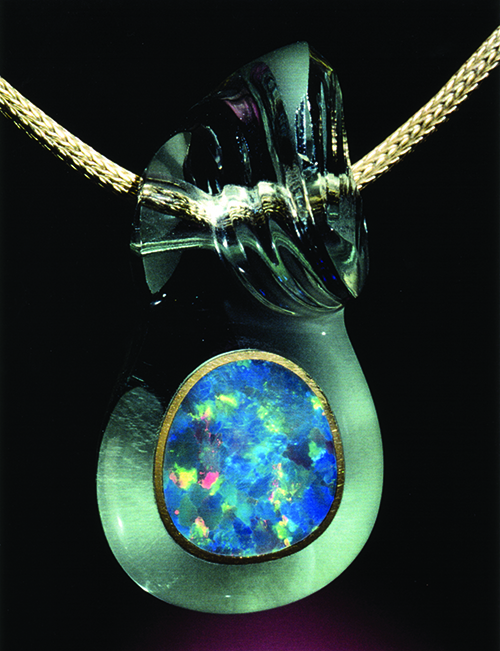
Looking Forward
Through GANA, many artists have found strength and real camaraderie in getting to know each other, interacting and trading technical information. At our Tucson gatherings, we share stories, discoveries of new gem materials, our latest work, and swap equipment ideas and techniques. Those meetings are open to all, members or not. They are a source of inspiration, encouragement, and motivation to many to continue this unique fine art.
I know that a whole new generation of gem carvers has joined our industry, and I look forward to seeing them participate and help the GANA organization flourish during the 21st century.
For more information about the Gem Artists of North America (GANA), visit www.gemartists.org or contact me directly, helen@gemartcenter.com.
Author: Helen Serras-Herman
 Helen Serras-Herman, a 2003 National Lapidary Hall of Fame inductee, is an acclaimed gem sculptor and gemologist with over 37 years of experience in unique gem sculpture and jewelry art. Visit her website at www.gemartcenter.com and her business Facebook page at Gem Art Center/Helen Serras-Herman.
Helen Serras-Herman, a 2003 National Lapidary Hall of Fame inductee, is an acclaimed gem sculptor and gemologist with over 37 years of experience in unique gem sculpture and jewelry art. Visit her website at www.gemartcenter.com and her business Facebook page at Gem Art Center/Helen Serras-Herman.
If you enjoyed what you’ve read here we invite you to consider signing up for the FREE Rock & Gem weekly newsletter. Learn more>>>
In addition, we invite you to consider subscribing to Rock & Gem magazine. The cost for a one-year U.S. subscription (12 issues) is $29.95. Learn more >>>


